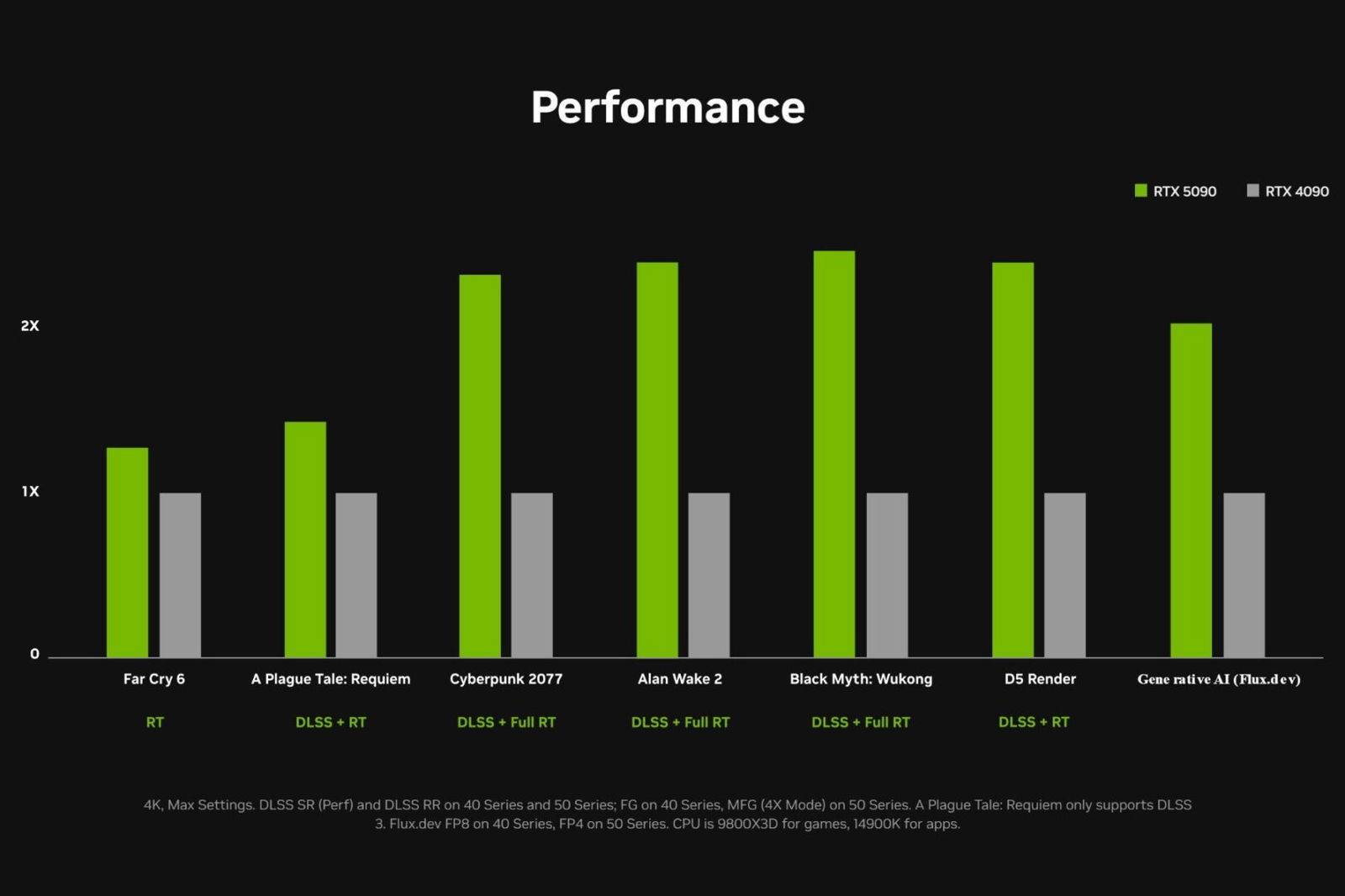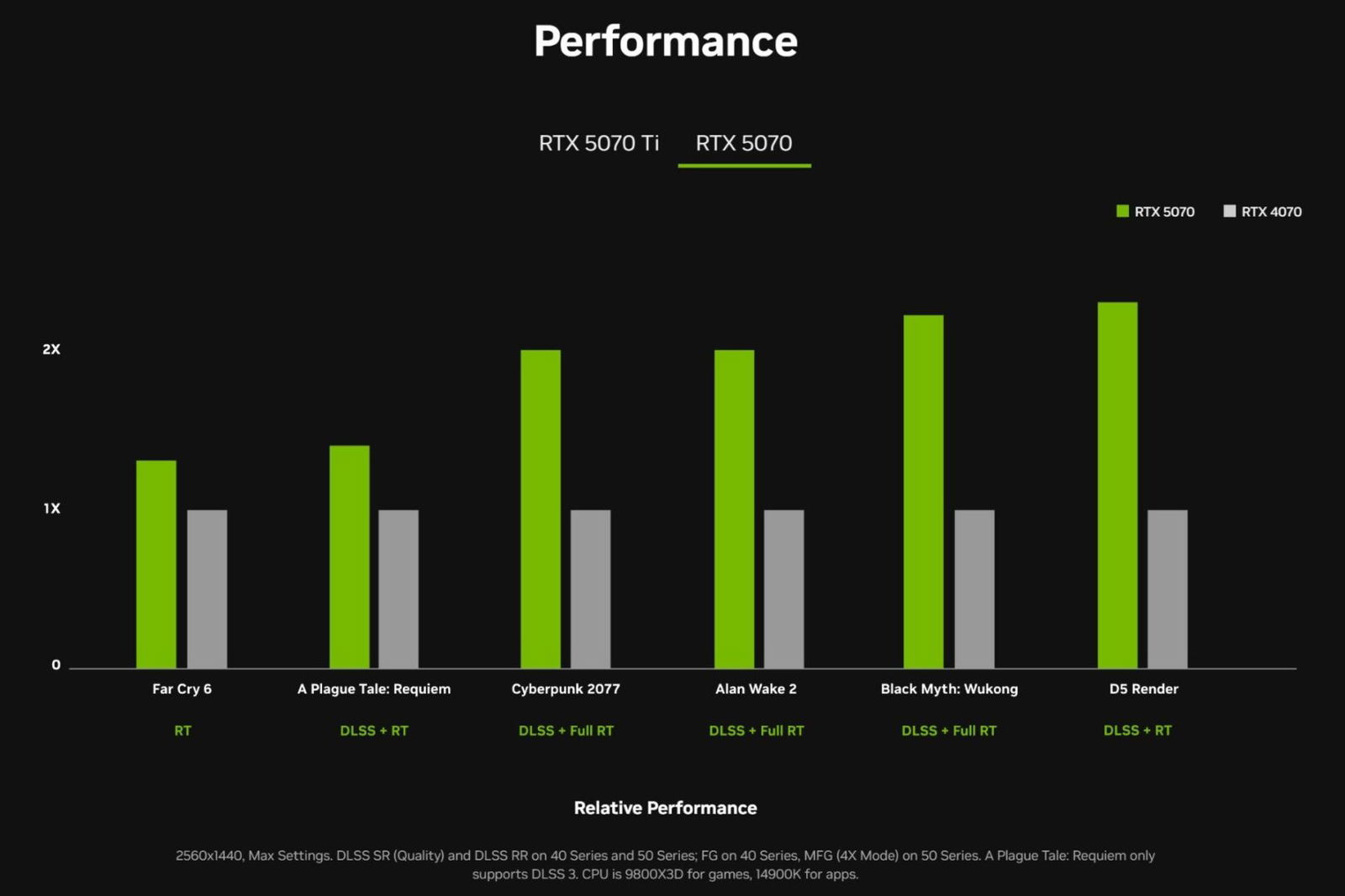Following the excitement of CES 2025, NVIDIA shared additional details about the new 50-series GPUs and what their Blackwell-based architecture can deliver.
CGMagazine attended NVIDIA’s Editors’ Day at CES 2025, where we learned more about what to expect from their next-generation GPUs and how they compare to the current 40-series lineup. It was clear that this latest generation represents a significant leap in processing power. Based on the details released, NVIDIA is promising substantial performance gains and new features designed to benefit both gamers and content creators. With impressive specifications across the lineup, this release will undoubtedly generate enthusiasm among those considering an upgrade. NVIDIA’s performance claims make it easy to see why.
At the forefront of the RTX 50-series lineup is the impressive RTX 5090, commanding a notable price of $1,999 USD—marking an increase of $400 compared to its predecessor. Despite the premium cost, NVIDIA claims the card delivers up to 70 per cent better performance than the RTX 4090, a jump that may justify the price hike for those seeking cutting-edge graphics capabilities.

For that price, the RTX 5090 boasts impressive specifications, including 32GB of GDDR7 memory on a 512-bit bus, potentially delivering unprecedented performance for high-end gaming and professional applications. With 21,760 CUDA cores and a boost clock of 2.41 GHz, the card is designed to handle the most demanding graphics tasks with ease, including complex AI workflows, or high-end content creation.
Not everyone needs the level of performance offered by a 90 level card. For those seeking a more balanced option with the new 50-series, the RTX 5080 is priced at a more accessible $999 USD, matching the cost of its predecessor. NVIDIA claims this card delivers performance comparable to the RTX 4090 at about half the price, making it an appealing choice for enthusiasts who want high-end performance without overspending.

Despite its lower cost, the RTX 5080 boasts impressive specifications and represents a significant step up from the previous generation’s RTX 4080. It features 10,752 CUDA cores, a boost clock of 2.62 GHz, and 16 GB of GDDR7 RAM on a 256-bit bus. It also delivers 171 ray tracing TFLOPS and 1,801 Tensor Core TOPS, all while maintaining a TGP of 360 W. Compared to the RTX 5090’s 575 W, this makes it a much more practical option for the average gamer or content creator.
| RTX 5090 | RTX 5080 | RTX 5070 Ti | RTX 5070 | |
|---|---|---|---|---|
| CUDA cores | 21,760 | 10,752 | 8,960 | 6,144 |
| Base clock | 2.01GHz | 2.30GHz | 2.30GHz | 2.16GHz |
| Boost clock | 2.41GHz | 2.62GHz | 2.45GHz | 2.51GHz |
| Memory (GDDR7) | 32GB | 16GB | 16GB | 12GB |
| Memory bus | 512-bit | 256-bit | 256-bit | 192-bit |
| Ray tracing TFLOPS | 318 | 171 | 133 | 94 |
| Tensor Core TOPS | 3,352 | 1,801 | 1,406 | 988 |
| Total graphics power | 575W | 360W | 300W | 250W |
| System requirements | 1,000W | 850W | 750W | 650W |
| Price | $1,999 | $999 | $749 | $549 |
| Availability | 30 January | 30 January | February 2025 | February 2025 |
The RTX 5070 Ti and RTX 5070 round out the lineup at US$749 and US$549 respectively, both priced $50 lower than their 40-series counterparts. These cards aim to provide excellent 1440p and 4K gaming experiences at more accessible price points. And like the rest of the 50-Series, these cards also take advantage of the full feature set of DLSS 4, giving a much more scalable experience should you want to push gaming to 4K, provided you don’t mind some frame generation thrown into the mix.

All RTX 50-series cards feature NVIDIA’s new Blackwell architecture, which introduces key improvements, including more efficient processing units, enhanced ray tracing capabilities, and improved AI performance. They also support PCIe 5.0 and come equipped with DisplayPort 2.1, enabling 8K resolution at 120 Hz refresh rates.
As mentioned earlier, NVIDIA is emphasizing the AI capabilities of its new 50-series GPUs, featuring improved Tensor cores designed to enhance DLSS (Deep Learning Super Sampling) and introduce new AI-driven rendering techniques. NVIDIA has ambitious plans for leveraging AI with its new Blackwell architecture, and the demos showcased during Editors’ Day were impressive. While real-world applications will ultimately determine its effectiveness, the Blackwell architecture appears poised to deliver significant advancements in AI across a variety of use cases based on what has been shown so far.
The RTX 5090 and 5080 are set to launch on Jan. 30, 2025, with the 5070 Ti and 5070 following in February. As with previous launches, early adopters may face challenges in securing cards due to high demand and potential supply constraints.
As the release date approaches, both gamers and professionals are eagerly anticipating the real-world performance of these GPUs. With promises of significant improvements across the board, the NVIDIA GeForce RTX 50-series looks poised to redefine graphics processing expectations in 2025 and beyond. CGMagazine will provide full reviews of the RTX 50-series lineup, offering an honest assessment of how the new GPUs stack up against the competition once the embargo lifts later this month.





